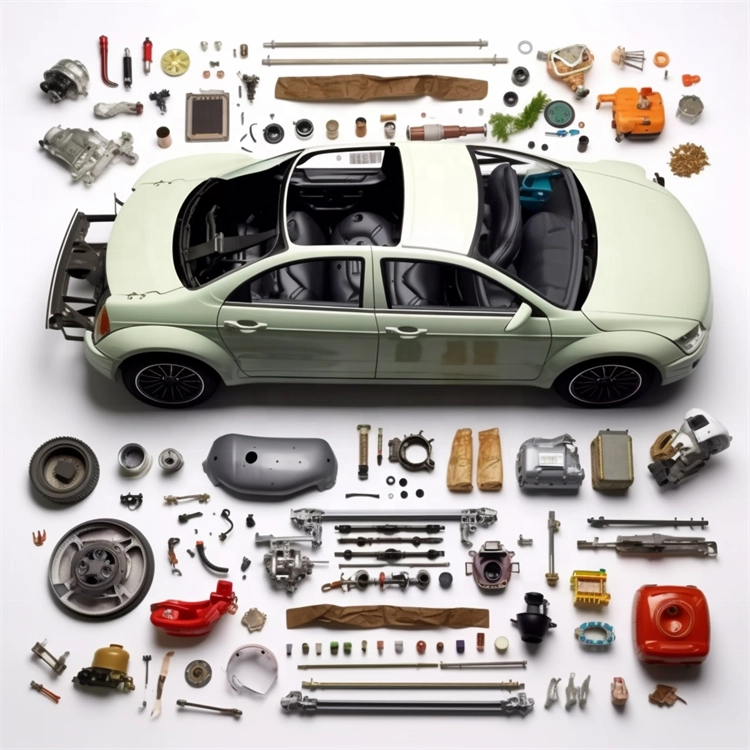In today’s global automotive industry, high-precision automobile sheet metal parts are the foundation of vehicle quality and export competitiveness. Whether you’re an OEM manufacturer, auto parts supplier, or B2B exporter, precision metal fabrication determines not only your production accuracy but also your global brand reputation.
From structural panels to engine brackets, precision ensures every piece fits perfectly—reducing rework, enhancing performance, and boosting profitability. Let’s explore why these sheet metal parts are essential for international success and how modern manufacturing technologies make them ideal for export markets.
Why Precision Matters in Automobile Sheet Metal Manufacturing
Precision defines quality in the automotive world. Even a small deviation in dimension or surface flatness can affect performance and assembly alignment.
Dimensional Accuracy Drives Reliability
Advanced CNC sheet metal fabrication and laser cutting technology ensure that each component meets tight tolerances, often within ±0.01 mm. This consistency supports smooth assembly lines and reduces fitting errors across different vehicle models.
Surface Quality Enhances Aesthetics and Functionality
Export markets—especially in Europe and North America—demand not only function but also appearance. High-precision automotive sheet metal components undergo polishing, powder coating, or electroplating for corrosion resistance and a flawless finish.

Key Advantages of High-Precision Sheet Metal Parts for Export
International buyers value suppliers that combine accuracy, durability, and customization. These are the core reasons high-precision parts stand out in the export market:
-
✅ Consistent Quality Control: ISO 9001-certified processes guarantee reliable production.
-
✅ Global Compatibility: Designs meet international standards (DIN, JIS, ASTM).
-
✅ Lightweight Performance: Advanced alloys reduce vehicle weight, improving fuel efficiency.
-
✅ Faster Assembly: Perfect-fit components lower installation time and error risk.
-
✅ Customizable Designs: OEM and ODM solutions fit diverse vehicle platforms.
Advanced Technologies Behind Precision Sheet Metal Fabrication
Modern manufacturers use a blend of cutting-edge technologies to achieve micron-level accuracy.
CNC and 5-Axis Machining
These machines deliver consistent, repeatable results, ideal for complex geometries found in car body molds, dashboards, and reinforcement frames.
Laser Cutting and Metal Stamping
Laser precision minimizes material waste and ensures smooth, burr-free edges—essential for safety-critical automotive parts.
Robotic Welding and Forming
Automation enhances uniformity and strengthens joints without deforming the metal structure, ensuring stability under high loads.

How High-Precision Parts Boost Export Competitiveness
Export customers prioritize suppliers who can deliver both precision and reliability. Here’s how these parts help achieve that:
Meeting Global Compliance and Certification
Parts that comply with ISO/TS 16949 and RoHS attract more international clients. Compliance also shortens customs clearance times and builds buyer trust.
Reducing Return and Warranty Costs
Accurate dimensions mean fewer rejections and claims—saving both time and logistics expenses.
Enhancing Brand Image
High-precision products reflect professionalism and technological capability, strengthening your reputation as a reliable exporter.
Selecting the Right Manufacturer for Export Markets
When choosing a custom sheet metal fabrication partner, focus on experience, certification, and export capability.
Key factors to consider:
-
Proven track record in international shipments
-
In-house CNC and quality inspection facilities
-
Support for design optimization and small-volume prototyping
-
Transparent documentation and packaging standards
A trusted manufacturer can handle the entire production—from material sourcing to surface treatment and packaging—ensuring seamless global delivery.
Future Trends in Automotive Sheet Metal Fabrication
As the automotive industry evolves, sheet metal technology continues to advance:
-
🔹 EV Lightweighting: Aluminum and composite panels reduce energy consumption.
-
🔹 Digital Twin Manufacturing: Real-time simulation ensures zero-defect production.
-
🔹 AI-Based Quality Control: Vision systems detect micro-defects automatically.
-
🔹 Sustainable Coating Processes: Eco-friendly finishes meet environmental regulations.
Exporters adopting these innovations gain a strong advantage in cost, quality, and sustainability.
Conclusion
In a competitive export environment, high-precision automobile sheet metal parts define success. They not only improve product quality but also enhance your brand image, ensure global compliance, and reduce production waste.
By choosing a manufacturer with advanced CNC sheet metal fabrication capabilities and strict quality standards, you can deliver superior automotive components that meet the demanding expectations of global buyers.
Precision isn’t just a feature—it’s your passport to international growth.
FAQ Section
1. What are the main materials used in high-precision automobile sheet metal parts?
Most manufacturers use aluminum, stainless steel, or carbon steel for their balance of strength, weight, and corrosion resistance.
2. How does CNC machining improve sheet metal part accuracy?
CNC machining allows for micron-level precision with repeatable consistency, essential for fitting and performance in automotive applications.
3. What certifications should I look for when sourcing sheet metal parts for export?
Key certifications include ISO 9001, IATF 16949, and RoHS compliance, which confirm quality and environmental standards.


